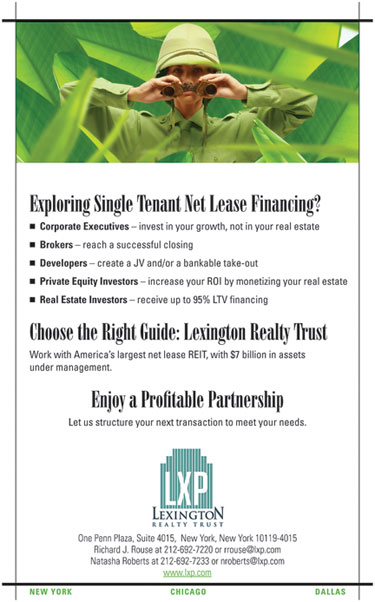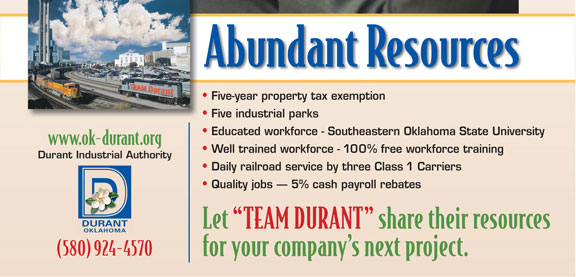![]()
SALE-LEASEBACK TRANSACTIONS
|
Utilizing the Sale-Leaseback Transaction Structure in Today’s Capital Constrained Market
by GARRY WEISS, SIOR, CCIM
and RENE CIRC H
istorically, for a corporation, real estate assets have had one primary application: operational necessity. Companies have been regularly leasing, developing, buying and even selling facilities to meet their operational objectives. However, with the rise of an active industrial real estate investment market, another application emerged. Strategic, long-term real estate that remains critical to operations has become an alternate source of capital. It is the sale-leaseback structure that allows the owner-occupier to free up capital without any operational implications. As such, sale-leaseback transactions have become a more popular component of a company’s financial management. First Industrial Realty Trust estimates that 15 billion square feet, or more than 60 percent of all industrial space, is owned by corporate users, the highest among commercial property types. 
HSBC in April confirmed that it was exploring buyer interest in its trophy properties in New York City, Paris and in London, where this building in Canary Wharf is located. Leaseback would probably be part of the sale agreement, reported The Sunday Times of London.
This translates to a $700-billion to $900-billion investment in non-core assets owned by corporations. For most users, the primary reason for ownership of their industrial real estate is control. The importance of controlling the asset rises proportionately to the additional investment made by the user within the facility to make it operational. However, tying up capital in real estate can have adverse implications for a company’s performance, especially in the current credit-constrained environment. In “normal” times, for many companies (especially higher-growth ones), there is a positive arbitrage between the expected return on core business investments and real estate returns. Today, proceeds from monetization of real assets can also be used to pay down debt at a discount, helping to improve overall leverage and debt coverage ratios. Further, a case for improved operational efficiency can be made. A 2002 study performed by Capital Economists for The Royal Institution of Chartered Surveyors found that companies who leased their space used 12 percent less space per employee than user-occupiers, increasing efficiency while reducing costs. Beyond the direct financial impact, real estate ownership also requires management to expend human resources, which could be used more productively in the core business. Leasing versus owning real estate is a capital allocation decision affecting both the balance sheet and income statement. When considering a sale-leaseback, a company must analyze the current market capitalization rate (cap rate), the book value and residual value of the property, the corporate tax rate and the proposed triple-net lease rate. This analysis will provide an internal rate of return (IRR) for the sale, which is the opportunity cost of the transaction. More explicitly, if a corporation is able to reinvest the sale proceeds back into its core business or buy back debt at a rate of return higher than the model’s IRR, a positive arbitrage exists between the two scenarios. Taking advantage of this arbitrage increases return on invested capital, positively impacts the corporate balance sheet, can be accretive to earnings per share and offers a source of capital beyond the financial and capital markets. This analysis makes a strong case for leasing versus owning for a large percentage of corporate industrial real estate user-owners. Next Steps
Once the determination to sell a real estate asset has been made, there are several factors for both the seller and the investor to consider. Typically, corporate sellers of core assets intend to use the assets for the long term. Transferring ownership of a property to an investor usually does not alter how the facility is operated. Under many triple-net leases, the user continues to be responsible for maintenance of the facility including repairs, replacements and restorations. 
While longer terms are common for properties involved in core sale-leaseback transactions, terms can be as short as a few months. A short-term sale-leaseback of a surplus property can offer a company the chance to monetize an asset at better pricing than when the facility is vacant. Additionally, a short-term lease provides flexibility to build or lease a new facility or to wind down operations. In either case, the sale-leaseback structure may be used as companies expand and contract their industrial supply chains. While sellers are looking to free up capital to reinvest in their core business, investors are looking for a predictable investment return for a period of time. Unlike other types of transactions, sale-leasebacks place as great an emphasis on the seller/tenant financials as they do on the characteristics of the asset itself. As with all real estate transactions, asset quality (age, functional utility for reuse, etc.), asset location and lease structure will be considerations in the pricing. The lease rate versus market rent will also impact pricing. When factoring in the seller financials, the pricing shifts from being based purely on the real estate value to a credit-based, debt-like pricing. The more comfort the potential investor has in each of these categories, the greater the pricing to be realized. Over the past several years the sale-leaseback transaction has been widely utilized. In some instances, corporations sold multiple properties as a portfolio to the same investor. Sale-leasebacks have also played a role in M&A activity. Private equity funds commonly used this form to aid in the underwriting and acquisition of new businesses. By simultaneously selling and leasing back the underlying real estate assets, the acquiring private equity firm could reduce the cash outlay needed to complete the business acquisition. Change in the Weather
As the table above indicates, industrial sale-leasebacks grew in popularity until the global economic meltdown, and the financial markets froze in the last four months of 2008. Under the current market conditions, total investment activity has slowed to a trickle. Whereas in past years, monthly industrial sales totaled as much as $3 billion, as tracked by Real Capital Analytics, closed transactions reported in February 2009 totaled a mere $400 million. This reduced activity is a result of the disappearance of the local leveraged buyer and the change in focus of the institutional cash buyer. Without an active CMBS market, only select balance sheet lenders are left in the market, and these have been requiring lower loan-to-value ratios, better credit tenants and higher yields. In turn, market cap rates have risen and the number and size of transactions have declined. In 2007, a property leased to a tenant with sub-investment grade credit could trade at a 6-percent cap rate. Today, a similar property is virtually illiquid, while one leased to a quality credit tenant would trade above 8 percent in primary markets. Property location has become increasingly important, with most secondary and all tertiary markets out of favor. Also, transaction structures are swinging back in favor of the investors, who are requiring deep discounts for specialized space and above-market rents, while tenants are incurring a higher degree of leasehold responsibility and accepting longer lease terms – 12 years being the minimum, but 15 years being strongly preferred. The composition of active investors has also shifted. With the emphasis on all-cash closings, only high-net-worth individuals, private REITs and some institutional investors are purchasing properties. “Despite the current economic climate, the decision between leasing and owning industrial real estate, in most cases, favors the former.”
Pension funds, which previously were active in the market, are challenged by the denominator effect – as the value of their broader portfolio dramatically decreased in valuation, their allocation to real estate has grown larger than the targeted range. Many public REITs have stated that they will not make any new investments for the foreseeable future, as they focus on de-leveraging their balance sheets and improving portfolio performance. Some life insurance companies are active; however, getting a quote can be difficult. Despite the current economic climate, the decision between leasing and owning industrial real estate, in most cases, favors the former. Companies should continue to evaluate the ownership versus leasing equation throughout the current downturn. Once the credit markets stabilize, the ability to complete sale-leaseback transactions will return, as investors will be looking for secure, stable and predictable returns. 
Garry Weiss
Garry Weiss, SIOR, CCIM and IAMC member, formerly Senior Vice President and National Director of First Industrial Realty Trust’s Integrated Industrial Solutions (IIS) platform, is Managing Principal of GSW Ventures Ltd., a boutique real estate services firm specializing in assisting corporate America with capital and operational needs through the industrial supply chain. Rene Circ is Director of Research for First Industrial Realty Trust Inc., a publicly-traded Real Estate Investment Trust (REIT).
|
Site Selection Online – The magazine of Corporate Real Estate Strategy and Area Economic Development.
©2009 Conway Data, Inc. All rights reserved. SiteNet data is from many sources and not warranted to be accurate or current.


